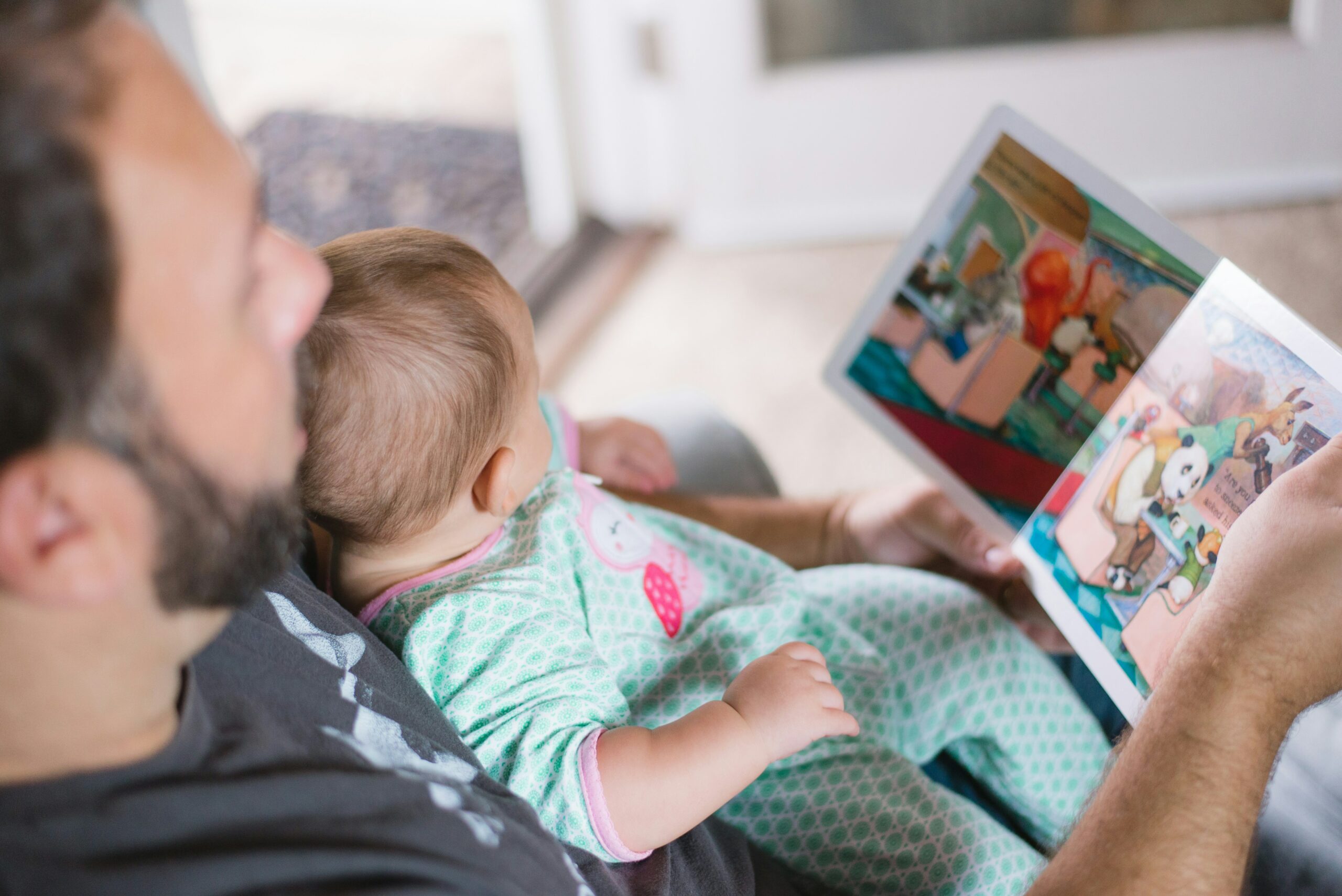Definition of Bibliotherapy
Bibliotherapy is the process of growing toward good emotional health through the medium of literature, including picture books, poetry, and chapter books. Bibliotherapy can enhance a child’s self-concept and improve self-understanding. It can nurture and build self-esteem, and give children a means to alleviate fears, anger, and insecurities. Bibliotherapy also teaches children tolerance and how to treat others. Studies show that it is never too late to start reading aloud children’s books, starting with infants. The American Academy of Pediatrics notes that reading aloud to babies starting at birth strengthens the parent-child bond and gets the baby started on important language and literacy skills.
Bibliotherapy and Childhood Development
Developmental bibliotherapy is an approach that specifically targets the emotional, psychological, and cognitive development of children and adolescents. Bibliotherapy can also be used as an effective tool to promote a child’s emotional, social, and intellectual development. John T. Pardeck, a noted researcher in this field, states that reading aloud can be used to meet any child’s growth and adjustment needs throughout development. Many elements of literature influence how engaged a child will be with literature, such as the use of illustrations, the font, and the size of a book. The books selected for bibliotherapy must be selected carefully.
Effects of Reading Aloud to Children
The Caldecott and Newbery books are logical choices as they have received the most prestigious awards in children’s literature. Many Caldecott and Newbery award-winning books contain bibliotherapeutic themes. Reading aloud to children is one way to reach children’s present life situation, giving comfort and a strong sense of security. Fiction can offer children space and time to deal with their life adjustments and disappointments. Reading someone else’s story can be comforting and give a greater sense of safety and love.
On a personal note, I vividly recall a moment when I was working in the psychology department of a school district, leading a grief group at a middle school, working primarily with 13-year-olds. In the second group session, the young teens learned of the violent deaths of two of their friends. One of the teens handed me a book (Holes by Louis Sachar) and asked me to read it aloud to the group. We spent several sessions of my reading aloud, and the teens listened intently as if this gave comfort and healing to them.
People of all ages easily lose themselves in stories. I have read books to all ages, from three years old in a classroom to families of all ages (including family therapy sessions at a local hospital).
Timeless Traditions of Storytelling
Storytelling is a timeless means of passing traditions down through generations. Storytelling has been used for centuries by cultures around the world. Once I led a group of 14-year-old Native American teenagers who had recently moved to this State and had significant adjustment issues in the new school. The co-leader of the group was from the Lakota tribe. The group evolved this way; a teen would present a problem and ask what to do, and the Lakota tribe member always started with a story that began “My grandfather once told me of a turtle…(or a rabbit or another animal) that crossed the road….” This was a magical story that was powerful and meaningful to the young teens, and a wondrous experience for the group leaders. I strongly believe that they will never forget these stories and the way they felt when they heard the story.
Bibliotherapy and Young Children
For very young children, a sense of belonging and security is paramount to positive self-worth and healthy growth and development. Read-aloud books are fun for parents and children to enjoy together. The classic books Blueberries for Sal and Make Way for Ducklings (both by Robert McCloskey) elicit a sense of belonging and security and have been read by teachers and parents for decades.
Caldecott and Newbery Award-Winning Books
The Caldecott and Newbery Medal-winning books listed below are specifically selected for their quality storytelling, engaging narratives, and their ability to address complex themes and emotions in a manner accessible to children. For instance, the aforementioned “Make Way for Ducklings” by Robert McCloskey or “The Snowy Day” by Ezra Jack Keats not only provide delightful stories but also explore themes of resilience, friendship, and exploration, which can resonate deeply with young readers and offer them comfort and understanding. Similarly, Newbery Medal-winning books such as “Bridge to Terabithia” by Katherine Paterson or “Where the Red Fern Grows” by Wilson Rawls tackle themes of loss, friendship, and self-discovery, providing readers with valuable insights and perspectives on life’s challenges.
The Importance of Reading Aloud
Just keep reading aloud. Reading aloud is a powerful tool for all ages. If you look at Amazon or Thriftbooks and shop for “Caldecott books” or Newbery books,” you will immediately see a long list of books awaiting. Ask the local public library staff for their recommendations, or read the New York Times book reviews and find a list of picture books and teen novels. Also, read the book yourself before reading to your children.
Book Recommendations
Caldecott Medal Winners (Selected)
– McCloskey, R. (1941). Make Way for Ducklings. Viking Press.
– De Angeli, M. (1950). The Door in the Wall. Doubleday.
– Brown, M. (1955). Cinderella, or The Little Glass Slipper. Charles Scribner’s Sons.
– Keats, E. J. (1963). The Snowy Day. Viking Press.
– Lenski, L. (1946). Strawberry Girl. Lippincott.
– Van Allsburg, C. (1982). Jumanji. Houghton Mifflin.
– Emberley, B., & Emberley, E. (1979). Drummer Hoff. Prentice-Hall.
– Crews, D. (1987). Freight Train. Greenwillow Books.
– Spier, P. (1978). Noah’s Ark. Doubleday.
– McCully, E. A. (1992). Mirette on the High Wire. G.P. Putnam’s Sons.
– Zemach, M. (1974). The Judges’ House. Farrar, Straus and Giroux.
– Pinkney, J. (2010). The Lion & the Mouse. Little, Brown Books for Young Readers.
– Rathmann, P. (1996). Officer Buckle and Gloria. Putnam.
– Wiesner, D. (2002). The Three Pigs. Clarion Books.
– Nelson, K. (2015). The Adventures of Beekle: The Unimaginary Friend. Little, Brown Books for
Young Readers.
– Henkes, K. (2005). Kitten’s First Full Moon. Greenwillow Books.
– Blackall, S. (2019). Hello Lighthouse. Little, Brown Books for Young Readers.
– Emberley, B., & Emberley, E. (1979). Drummer Hoff. Prentice-Hall.
– Crews, D. (1987). Freight Train. Greenwillow Books.
– Santat, D. (2015). The Adventures of Beekle: The Unimaginary Friend. Little, Brown Books for
Young Readers.
– Azarian, M. (1999). Snowflake Bentley. Houghton Mifflin.
– Blackall, S. (2015). Finding Winnie: The True Story of the World’s Most Famous Bear. Little,
Brown Books for Young Readers.
– Klassen, J. (2012). This Is Not My Hat. Candlewick Press.
Newbery Medal Winners (Selected)
– Lenski, L. (1946). Strawberry Girl. Lippincott.
– Paterson, K. (1978). Bridge to Terabithia. T.Y. Crowell Co.
– Rawls, W. (1961). Where the Red Fern Grows. Doubleday.
– L’Engle, M. (1981). A Swiftly Tilting Planet. Farrar, Straus, Giroux.
– Fleischman, S. (1987). Joyful Noise: Poems for Two Voices. Harper & Row.
– Perkins, L. R. (1994). Criss Cross. Greenwillow Books.
– Spinelli, J. (1997). Maniac Magee. Little, Brown.
– Creech, S. (1995). Walk Two Moons. HarperCollins.
– Lowry, L. (1994). The Giver. Houghton Mifflin.
– Giff, P. R. (2004). Lily’s Crossing. Delacorte Press.
– Cushman, K. (1996). The Midwife’s Apprentice. Clarion Books.
– Park, L. S. (2002). A Single Shard. Clarion Books.
– Perkins, L. R. (2006). Criss Cross. Greenwillow Books.
– Schmidt, G. D. (2005). Lizzie Bright and the Buckminster Boy. Clarion Books.
– Woodson, J. (2015). Brown Girl Dreaming. Nancy Paulsen Books.
– DiCamillo, K. (2014). Flora & Ulysses: The Illuminated Adventures. Candlewick Press.
– Applegate, K. (2013). The One and Only Ivan. HarperCollins.
– Stead, R. (2010). When You Reach Me. Wendy Lamb Books.
– Gaiman, N. (2009). The Graveyard Book. HarperCollins.
To schedule an appointment with Jenni Jennings, click here!



